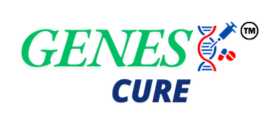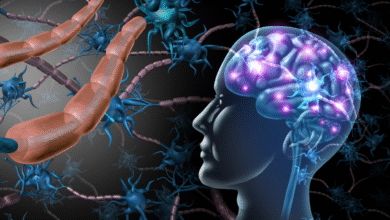Genetic Disorders: From Cystic Fibrosis to Huntington’s Disease

What are the different types of genetic disorders?
1. Single-gene disorders: These are caused by a change or mutation in one gene. There are thousands of known single-gene disorders, and they can be inherited in different patterns:
- Autosomal dominant: Only one copy of the mutated gene is needed to cause the disorder. Examples include Huntington’s disease and Marfan syndrome.
- Autosomal recessive: Two copies of the mutated gene are needed to cause the disorder, one inherited from each parent. Examples include cystic fibrosis and sickle cell anemia.
- X-linked: The mutated gene is located on the X chromosome. These disorders can be recessive or dominant. Examples include Duchenne muscular dystrophy and hemophilia.
2. Chromosomal disorders: These are caused by changes in the number or structure of chromosomes. Chromosomes are the structures that hold our genes. Examples include:
- Down syndrome: Caused by an extra copy of chromosome 21 (trisomy 21).
- Turner syndrome: Affects females and is caused by a missing or incomplete X chromosome.
3. Multifactorial disorders: These are caused by a combination of genetic and environmental factors. They are often more complex and difficult to predict than single-gene disorders. Examples include:
- Heart disease
- Diabetes
- Many types of cancer
What are the symptoms of Huntington’s disease?
Huntington’s disease (HD) is a progressive brain disorder that affects movement, thinking (cognitive), and psychiatric symptoms. Symptoms can vary greatly between individuals and can change over time. Here’s a breakdown of the main categories:
Movement Disorders:
- Chorea: Involuntary jerky or twitching movements, often described as fidgeting or restlessness. This is a hallmark symptom of HD.
- Dystonia: Sustained muscle contractions that cause twisting and repetitive movements or abnormal postures.
- Rigidity: Muscle stiffness.
- Impaired gait and balance: Difficulty walking, clumsiness, and increased risk of falls.
- Difficulty with fine motor skills: Problems with tasks like writing, buttoning clothes, or using utensils.
- Difficulty with speech and swallowing: Slurred speech (dysarthria) and problems swallowing (dysphagia) can lead to choking and malnutrition.
Cognitive Impairments:
- Difficulty with focus and attention: Trouble concentrating, staying on task, and multitasking.
- Memory problems: Difficulty remembering recent events or learning new information.
- Impaired executive function: Problems with planning, organizing, decision-making, and problem-solving.
- Slowed processing speed: Taking longer to process information and respond to questions.
- Lack of awareness of one’s own abilities: Difficulty recognizing changes in their own behavior or abilities.
Psychiatric Symptoms:
- Depression: Feelings of sadness, hopelessness, and loss of interest in activities.
- Irritability: Increased frustration, impatience, and outbursts of anger.
- Mood swings: Rapid shifts in mood, from sadness to euphoria or anger.
- Obsessive-compulsive disorder (OCD): Repetitive thoughts and behaviors.
- Impulsivity: Acting without thinking about the consequences.
- Social withdrawal: Loss of interest in social interactions and activities.
How are genetic disorders inherited?
Genetic disorders are passed down from parents to their children through genes. Genes are like instruction manuals that tell our bodies how to grow and function. We inherit half of our genes from each parent.
Here are the main ways genetic disorders are inherited:
1. Autosomal Dominant Inheritance:
- Only one copy of the mutated gene is needed for a person to have the disorder.
- If a parent has the disorder, each child has a 50% chance of inheriting the mutated gene and developing the disorder.
- Examples: Huntington’s disease, Marfan syndrome
2. Autosomal Recessive Inheritance:
- Two copies of the mutated gene are needed for a person to have the disorder, one inherited from each parent.
- People with only one copy of the mutated gene are called carriers. They don’t have the disorder but can pass the mutated gene to their children.
- If both parents are carriers, there is a:
- 25% chance their child will inherit both mutated genes and have the disorder.
- 50% chance their child will inherit one mutated gene and be a carrier.
- 25% chance their child will inherit neither mutated gene and not have the disorder or be a carrier.
- Examples: Cystic fibrosis, sickle cell anemia
3. X-linked Inheritance:
- The mutated gene is located on the X chromosome, one of the sex chromosomes (XX in females, XY in males).
- X-linked recessive:
- Males only have one X chromosome, so if they inherit a mutated X chromosome, they will have the disorder.
- Females have two X chromosomes, so they usually need two mutated X chromosomes to have the disorder. If they have only one, they are carriers.
- Examples: Duchenne muscular dystrophy, hemophilia
- X-linked dominant:
- Only one mutated X chromosome is needed for both males and females to have the disorder.
- These disorders are less common than X-linked recessive disorders.
How common are genetic disorders?
- Overall: It’s estimated that around 1 in 21 people are affected by a genetic disorder classified as “rare” (usually defined as affecting less than 1 in 2,000 people).
- Single-gene disorders: Around 1 in 50 people are affected by a known single-gene disorder.
- Chromosomal disorders: Around 1 in 263 people are affected by a chromosomal disorder.
- Congenital malformations: Genetic disorders and congenital abnormalities occur in about 2%-5% of all live births.
Factors affecting prevalence:
- Specific disorder: Some genetic disorders are more common than others. For example, cystic fibrosis is more common in people of Northern European descent, while sickle cell anemia is more common in people of African descent.
- Population: The prevalence of certain genetic disorders can vary significantly between different populations due to factors like genetic ancestry and consanguinity (marriage between close relatives).
- Diagnostic methods: Advances in genetic testing and diagnostic methods are constantly improving our ability to identify genetic disorders, which can affect prevalence estimates.
What causes cystic fibrosis?
Cystic fibrosis (CF) is caused by mutations in a gene called the cystic fibrosis transmembrane conductance regulator (CFTR) gene. This gene provides instructions for making a protein that controls the movement of salt and water in and out of cells in various parts of the body, including the lungs, pancreas, liver, intestines, and sweat glands.
Here’s a breakdown of how these mutations lead to CF:
- Faulty CFTR protein: Mutations in the CFTR gene disrupt the function of the CFTR protein. This protein normally acts as a channel that allows chloride ions (a component of salt) to move across cell membranes. When the protein is faulty, the movement of chloride ions is impaired.
- Thick, sticky mucus: The impaired movement of chloride ions leads to an imbalance in salt and water in the body’s secretions, such as mucus. This causes the mucus to become abnormally thick and sticky.
- Organ damage: This thick, sticky mucus can clog various organs, leading to a range of problems:
- Lungs: Clogged airways make it difficult to breathe and create an environment where bacteria can thrive, leading to recurrent lung infections.
- Pancreas: Blocked ducts prevent digestive enzymes from reaching the intestines, leading to problems with digesting and absorbing nutrients.
- Other organs: CF can also affect the liver, intestines, and reproductive system.
What are the treatments for genetic disorders?
Treatments for genetic disorders vary widely depending on the specific condition, the severity of symptoms, and the underlying genetic cause. While there is no cure for many genetic disorders, various treatments can help manage symptoms, improve quality of life, and in some cases, slow disease progression. Here are some general categories of treatments:
1. Managing Symptoms:
- Medications: Many medications are used to manage specific symptoms of genetic disorders. For example:
- Bronchodilators and mucus thinners for cystic fibrosis to help with breathing.
- Pain relievers for sickle cell anemia to manage pain crises.
- Enzyme replacement therapy for certain metabolic disorders.
- Therapies: Various therapies can help improve physical and cognitive function:
- Physical therapy to improve strength, mobility, and coordination.
- Occupational therapy to help with daily living skills.
- Speech therapy to address speech and language difficulties.
2. Addressing the Underlying Cause:
- Gene therapy: This approach aims to correct the underlying genetic defect by introducing a healthy copy of the gene, inactivating a mutated gene, or editing the faulty gene. Gene therapy is still a relatively new field, but it holds great promise for treating certain genetic disorders.
- Enzyme replacement therapy: This involves providing the missing or deficient enzyme to individuals with certain metabolic disorders.
- Bone marrow transplantation: This procedure can be used to treat certain blood disorders and immune deficiencies by replacing faulty bone marrow with healthy stem cells.
3. Other Treatments:
- Surgery: Surgery may be needed to correct certain physical abnormalities associated with genetic disorders, such as heart defects or cleft palate.
- Dietary management: Specific dietary modifications may be necessary for individuals with certain metabolic disorders to help manage their condition.
- Monitoring and surveillance: Regular check-ups and monitoring are important for many genetic disorders to detect and manage any complications early on.
Where can I find support if I have a genetic disorder?
1. Healthcare Professionals:
- Genetic counselors: These professionals have specialized training in genetics and can provide information about genetic disorders, inheritance patterns, and available resources. They can also offer emotional support and guidance.
- Doctors and specialists: Your primary care physician or specialists, such as geneticists, neurologists, or pulmonologists, can provide medical care and management for your specific condition.
2. Support Organizations:
- National Organization for Rare Disorders (NORD): NORD is a patient advocacy organization that provides information and support for individuals with rare diseases, including many genetic disorders. They have a database of patient assistance programs and other resources.
- Genetic Alliance: This network connects individuals and families with genetic conditions to support groups, educational resources, and advocacy organizations.
- Disease-specific organizations: Many organizations focus on specific genetic disorders, such as the Cystic Fibrosis Foundation, the Huntington’s Disease Society of America, or the National Down Syndrome Society. These organizations offer valuable information, support groups, and resources tailored to the specific condition.
3. Online Resources:
- Online support groups and forums: Many online communities provide a space for individuals with genetic disorders and their families to connect, share experiences, and offer support to one another.
- Websites and databases: Websites like the National Institutes of Health (NIH) and the Centers for Disease Control and Prevention (CDC) offer reliable information about genetic disorders and related resources.
4. Local Resources:
- Local support groups: Many communities have local support groups for individuals with genetic disorders and their families. These groups can provide a valuable source of support and connection.
- Community health centers: These centers often offer a range of services, including genetic counseling and support groups.





